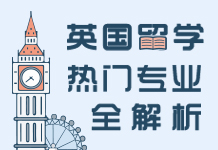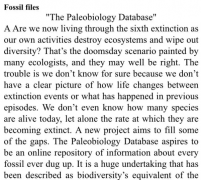2015年6月27日雅思阅读考试真题回忆
来源:未知
浏览:
发布日期:2015-07-22 10:25
摘要:2015年6月27日大陆雅思阅读都考了哪些题目?青岛朗阁学校雅思老师第一时间为大家搜集整理了2015年6月27日雅思阅读真题回忆,祝同学取得好成绩。
2015年6月27日大陆雅思阅读都考了哪些题目?青岛朗阁学校雅思老师第一时间为大家搜集整理了2015年6月27日雅思阅读真题回忆,祝同学取得好成绩。
|
考试日期 |
2015年06月27日 |
|
Passage 1 |
Title:Alfred Nobel The man behind the Nobel Prize Question types: TRUE/FALSE/NOT GIVEN 6 题 Summary 7 题 |
|
Alfred Nobel的文章是我在精品课上讲过的哦(其实朗阁雅思基础班就讲过相似文章)!尤其是7道summary,基本上是原题重现!所以在朗阁上过精品班的同学打开试题的一刻有没有飞起来~ |
|
|
参考阅读 |
A Since 1901, the Nobel Prize has been honoring men and women from all comers of the globe for outstanding achievements in physics, chemistry, medicine, literature, and for work in peace. The foundations for the prize were laid in 1895 when Alfred Nobel wrote his last will, leaving much of his wealth to the establishment of the Nobel Prize.
B Alfred Nobel was born in Stockholm on October 21, 1833. His father Immanuel Nobel was an engineer and inventor who built bridges and buildings in Stockholm. In connection with his construction work Immanuel Nobel also experimented with different techniques for blasting rocks. Successful in his industrial and business ventures, Immanuel Nobel was able, in 1842, to bring his family to St. Petersburg. There, his sons were given a first class education by private teachers. The training included natural sciences, languages and literature. By the age of 17 Alfred Nobel was fluent in Swedish, Russian, French, English and German. His primary interests were in English literature and poetry as well as in chemistry and physics. Alfred’s father, who wanted his sons to join his enterprise as engineers, disliked Alfred’s interest in poetry and found his son rather introverted.
C In order to widen Alfred’s horizons his father sent him abroad for further training in chemical engineering. During a two year period Alfred Nobel visited Sweden, Germany, France and the United States. In Pads, the city he came to like best, he worked in the private laboratory of Professor T. J. Pelouze, a famous chemist. There he met the young Italian chemist Ascanio Sobrero who, three years earlier, had invented nitroglycerine, a highly explosive liquid. But it was considered too dangerous to be of any practical use. Although its explosive power greatly exceeded that of gunpowder, the liquid would explode in a very unpredictable manner if subjected to heat and pressure. Alfred Nobel became very interested in nitroglycerine and how it could be put to practical use in construction work. He also realized that the safety problems had to be solved and a method had to be developed for the controlled detonation of nitroglycerine. D After his return to Sweden in 1863, Alfred Nobel concentrated on developing nitroglycerine as an explosive. Several explosions, including one (1864) in which his brother Kmil and several other persons were killed, convinced the authorities that nitroglycerine production was exceedingly dangerous. They forbade further experimentation with nitroglycerine within the Stockholm city limits and Alfred Nobel had to move his experimentation to a barge anchored on Lake Malaren. Alfred was not discouraged and in 1864 he was able to start mass production of nitroglycerine. To make the handling of nitroglycerine safer Alfred No el experimented with different additives. He soon found that mixing nitroglycerine with kieselguhr would turn the liquid into a paste which could be shaped into rods of a size and form suitable for insertion into drilling holes. In 1867 he patented this material under the name of dynamite. To be able to detonate the dynamite rods he also invented a detonator (blasting cap) which could be ignited by lighting a fuse. These inventions were made at the same time as the pneumatic drill came into general use. Together these inventions drastically reduced the cost of blasting rock, drilling tunnels, building canals and many other forms of construction work.
E The market for dynamite and detonating caps grew very rapidly and Alfred Nobel also proved himself to be a very skillful entrepreneur and businessman. Over the years he founded factories and laboratories in some 90 different places in more than 20 countries. Although he lived in Paris much of his life he was constantly traveling. When he was not traveling or engaging in business activities Nobel himself worked intensively in his various laboratories, first in Stockholm and later in other places. He focused on the development of explosives technology as well as other chemical inventions, including such materials as synthetic rubber and leather, artificial sill, etc. By the time of his death in 18% he had 355 patents.
F Intensive work and travel did not leave much time for a private life. At the age of 43 he was feeling like an old man. At this time he advertised in a newspaper "Wealthy, highly-educated elder gentleman seeks lady of mature age, versed in languages, as secretary and supervisor of household. " The most qualified applicant turned out to be an Austrian woman, Countess Bertha Kinsky. After working a very short time for Nobel she decided to return to Austria to marry Count Arthur yon Sutrner. In spite of this Alfred Nobel and Bertha von Suttner remained friends and kept writing letters to each other for decades. Over the years Bertha von Suttner became increasingly critical of the arms race. She wrote a famous book, Lay Down Your Arms and became a prominent figure in the peace movement. No doubt this influenced Alfred Nobel when he wrote his final will which was to include a Prize for persons or organizations who promoted peace. Several years after the death of Alfred Nobel, the Norwegian Storting (Parliament) decided to award the 1905 Nobel Peace Prize to Bertha von Suttner.
G Alfred Nobel died in San Remo, Italy, on December 10, 1896. When his will was opened it came as a surprise that his fortune was to be used for Prizes in Physics, Chemistry, Physiology or Medicine, Literature and Peace. The executors of his will were two young engineers, Ragnar Sohlman and Rudolf Lilljequist. They set about forming the Nobel Foundation as an organization to take care of the financial assets left by Nobel for this purpose and to coordinate the work of the Prize-Awarding Institutions. This was not without its difficulties since the will was contested by relatives and questioned by authorities in various countries.
H Alfred Nobel’s greatness lay in his ability to combine the penetrating mind of the scientist and inventor with the forward-looking dynamism of the industrialist. Nobel was very interested in social and peace-related issues and held what were considered radical views in his era. He had a great interest in literature and wrote his own poetry and dramatic works. The Nobel Prizes became an extension d a fulfillment of his lifetime interests. |
|
题型技巧分析
|
判断题依然是考试频率最高的试题,有以下特点点需要注意: 1. 两大类型 :TRUE/FALSE/NOT GIVEN; YES/NO/NOT GIVEN 2. 顺序原则 3. 只考细节 4. 同义转换 |
|
参考答案: Questions 1-6 1.The first Nobel Prize was awarded in 1895. (FALSE) 2. Nobel’s father wanted his son to have better education than what he had had. (NOT GIVEN) 3. Nobel was an unsuccessful businessman. (FALSE) 4. Bertha yon Suttner was selected by Nobel himself for the first peace prize. (FALSE) 5. The Nobel Foundation was established after the death of Nobel. (TRUE) 6. Nobel’s social involvement was uncommon in the 1800’s. (TRUE) Questions 7-13 Education: Having accumulated a great fortune in his business, Nobel’s father determined to give his son the best education and sent him abroad to be trained in 7 _chemical engineering_ During Nobel’s study in Paris, he worked in a private laboratory, where he came in contact with a young Scientist (engineer) 8 _construction_ and his invention nitroglycerine, a more powerful explosive than 9 _gunpowder_ . Benefits in construction works: Nobel became really interested in this new explosive and experimented on it. But nitroglycerine was too dangerous and was banned for experiments within the city of 10 _Stockholm_ .So Nobel had to move his experiments to a lake. To make nitroglycerine easily usable, Nobel invented dynamite along with 11 _detonator_ while in the meantime 12 _pneumatic drill_ became popular, all of which dramatically lowered the 13 _cost_ of construction works. |
|
|
剑桥雅思真题推荐原文 |
C9T1P1 |
|
Passage 2 |
Title:Report of the state of the digital music Question types: list heading 7 题 summary 4 题 多选(5选2 )2 题 |
|
文章大意 |
电子音乐 |
|
题型技巧分析
|
List of Headings的解题步骤: 1. 阅读题目要求,把例题所选小标题从小标题列表中划掉,把已选段落从文章中划掉,把不需要选的段落在文章中划掉。 2. 阅读所有小标题,划出关键词,预测段落信息。 3. 浏览段落,首二末。 4. 比较段落与小标题,可用排除法。 |
|
参考答案: 21. games 22. conventional stores 23. market share 24-25. BD |
|
|
剑桥雅思真题推荐原文 |
C7T1P1 |
|
Passage 3 |
Title:British Farming Work Question types: Multiple Choice 5题; TRUE/FALSE/NOT GIVEN 5题 Short Answer Questions 3题 |
|
文章大意 |
英国战前战后农业政策,温饱解决后注意一些环保政策 |
|
题型技巧分析
|
简答题解题步骤: 1.找出题目中的关键词,最好先定位到原文中的一个段落。 2.从头到尾快速阅读该段落,根据题目中的其他关键词,确定正确答案。 3.答案要对应题目中的特殊疑问词。 4.要注意顺序性,即题目的顺序与原文的顺序基本一致。 |
|
参考答案: B TRUE NOT GIVEN FALSE TRUE agriculture depression public concern |
|
|
剑桥雅思真题推荐原文 |
C7T1P3 |
|
考试趋势分析和备考指导 |
本场雅思阅读考试中判断题依然是题量最大的题型,summary连续两周和判断题题量一样,也上升为最高频题型,考生们要提别注意。本次考试出现了List of Headings题型,此题型在4月考了两次,在5,6月各考了一次,出现频率较低。另外在4,5月出现频率较高的句子完成题在6月的后两次考试中并未出现。考生们可根据最近的题型趋势,结合自己的优劣势,安排复习。 |

扫二维码,添加朗阁咨询老师,备注“官网”
免费领取雅思、托福备考计划、精选资料,最新口语新题考点资料
25
2022-06
-
2020年1月16日雅思听力考试真题
2020年1月16日雅思考试已经结束,正在备考雅思的小伙伴,你们想要知道这次考试的听力部分都...
25
2022-06
-
2020年1月16日雅思阅读考试真题
正在进行雅思备考的小伙伴,你们想知道2020年1月16日雅思考试的考试内容吗?今天为了帮助大家...
25
2022-06
-
2020年1月16日雅思写作考试真题
今天为了帮助正在进行雅思备考的小伙伴更好的准备雅思考试,青岛朗阁雅思写作名师 费晓静...
25
2022-06
-
2020年1月16日雅思口语考试真题
今天青岛朗阁雅思口语名师张开翼为大家整理了2020年1月16日雅思口语考题总结,分析了雅思口...
04
2020-12
-
2020年11月14日朗阁雅思听力考题回顾
今天,要和大家分享的是2020年11月14日朗阁雅思听力考题回顾,希望这篇文章能够对大家的学习...
04
2020-12
-
2020年11月14日朗阁雅思阅读考题回顾
今天,要和大家分享的是2020年11月14日朗阁雅思阅读考题回顾,希望这篇文章能够对大家的学习...
热门课程
大家都在看
阅读(2095)
阅读(1965)
阅读(1942)
阅读(1323)
阅读(1093)
阅读(831)







